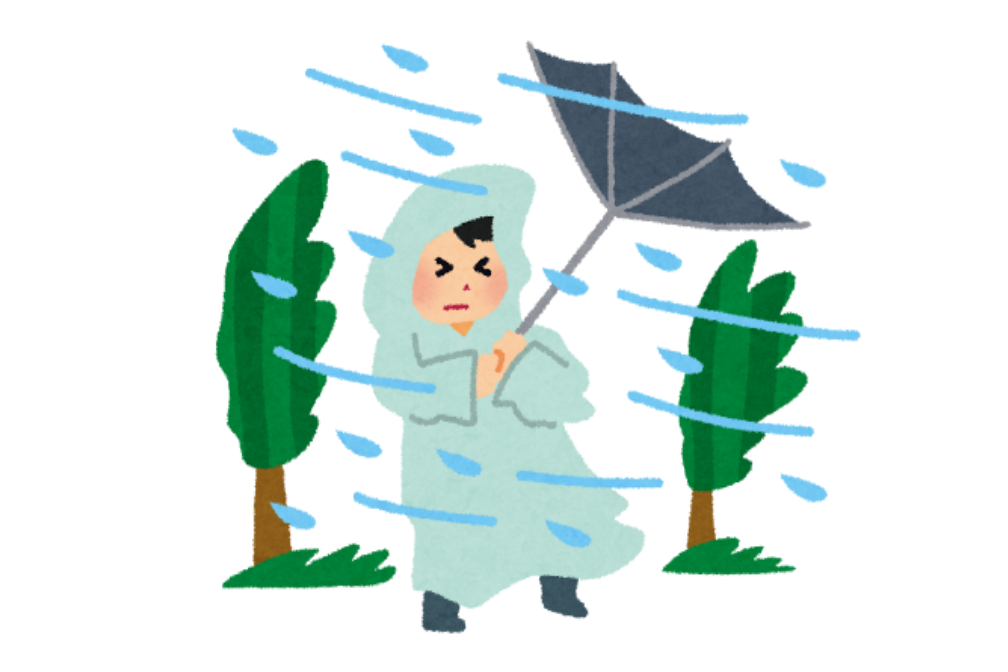2020 The typhoon season is coming, be prepared.
 2020.08.24
2020.08.24According to the Meteorological Agency, an average of 26 typhoons form each year over the Northwest Pacific Ocean and some of these will make their way to Japan.
They come most frequently in August, but most of the damage occurs in September or later. During that time, autumn rain fronts often stay near Japan, and moist winds can blow from the eastern side of a typhoon toward the rain front to cause heavy rain.
An increase in the number of typhoons and a doubling in the occurrences of heavy rainfall have been blamed on global warming.
It is very important to pay attention to the latest information as the situation can change very quickly.
Be sure to pay close attention to the news as the information is updated.
Be aware that public transportation is often disrupted when a typhoon strike.
Shinkansen and other trains as well can be cancelled on short notice so to avoid trouble,
please check before planning any travel.
If you were planning to go anywhere like mountains or the beach, be sure to put your safety first
and do not take unnecessary risks.
If your home is safe, stay inside as much as possible.
The following website of the Japan Meteorological Agency provides detailed information of typhoons.
http://www.jma.go.jp/en/typh/
The Japan Safe Travel site of the Japan National Tourism Organization provides info on what to do and have links and hotline numbers that provide help and information in case of emergency. Their Twitter feed is always up to date with the latest storm status.
https://www.japan.travel/en/news/JapanSafeTravel/
(JNTO: JNTO Official Twitter account provides useful information to foreigners who are travelling in Japan or about to travel to Japan.)
Japan Times has a disaster page on which they will post information in case of an emergency.
https://disaster.japantimes.co.jp/
NHK World has news in English
https://www3.nhk.or.jp/nhkworld/en/news/
NHK channel on regular Tv usually have English available for their evening news broadcast.
You can also watch other channels for detailed information on the typhoon even though it will be in Japanese.
* Weather watches (chuiho), are calls for “caution” when it has been predicted
that damage may occur as a result of winds and rain brought about by bad weather.
* Warnings (keiho), are released when forecasters predict that a storm will cause heavy widespread damage.
* “Heavy rain and flooding warnings” (ooame-kozui keiho) or
* “Heavy rain information” (ooame ni kansuru joho) are also signs that dangerous weather conditions are present.
What you can do to protect yourself at your home;
Take away anything that is outside on the balcony or around your home, like pots, plants, toys, patio furniture etc.
Keep a flashlight handy, put the freezer on the coldest temperature to minimize spoilage if the power is cut.
Outside your home:
Stay away from underground facilities, rivers, and waterfronts.
Watch out for flying debris.





